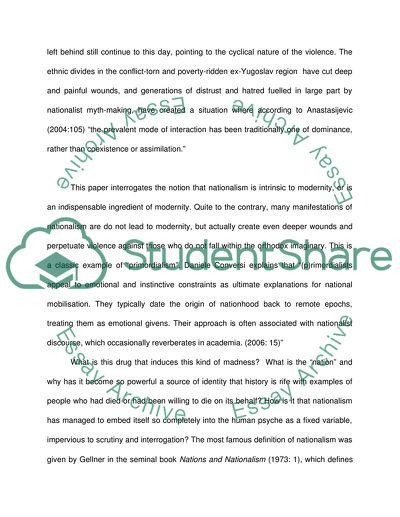Cite this document
(“Discussing the Statement - Nationalism Is Intrinsic to Modernity Assignment”, n.d.)
Discussing the Statement - Nationalism Is Intrinsic to Modernity Assignment. Retrieved from https://studentshare.org/social-science/1772332-nationalism-is-intrinsic-to-modernity-discuss-the-statement-in-reference-to-at-least-2-aspects-of-modernisation-that-are-covered-in-the-module
Discussing the Statement - Nationalism Is Intrinsic to Modernity Assignment. Retrieved from https://studentshare.org/social-science/1772332-nationalism-is-intrinsic-to-modernity-discuss-the-statement-in-reference-to-at-least-2-aspects-of-modernisation-that-are-covered-in-the-module
(Discussing the Statement - Nationalism Is Intrinsic to Modernity Assignment)
Discussing the Statement - Nationalism Is Intrinsic to Modernity Assignment. https://studentshare.org/social-science/1772332-nationalism-is-intrinsic-to-modernity-discuss-the-statement-in-reference-to-at-least-2-aspects-of-modernisation-that-are-covered-in-the-module.
Discussing the Statement - Nationalism Is Intrinsic to Modernity Assignment. https://studentshare.org/social-science/1772332-nationalism-is-intrinsic-to-modernity-discuss-the-statement-in-reference-to-at-least-2-aspects-of-modernisation-that-are-covered-in-the-module.
“Discussing the Statement - Nationalism Is Intrinsic to Modernity Assignment”, n.d. https://studentshare.org/social-science/1772332-nationalism-is-intrinsic-to-modernity-discuss-the-statement-in-reference-to-at-least-2-aspects-of-modernisation-that-are-covered-in-the-module.


